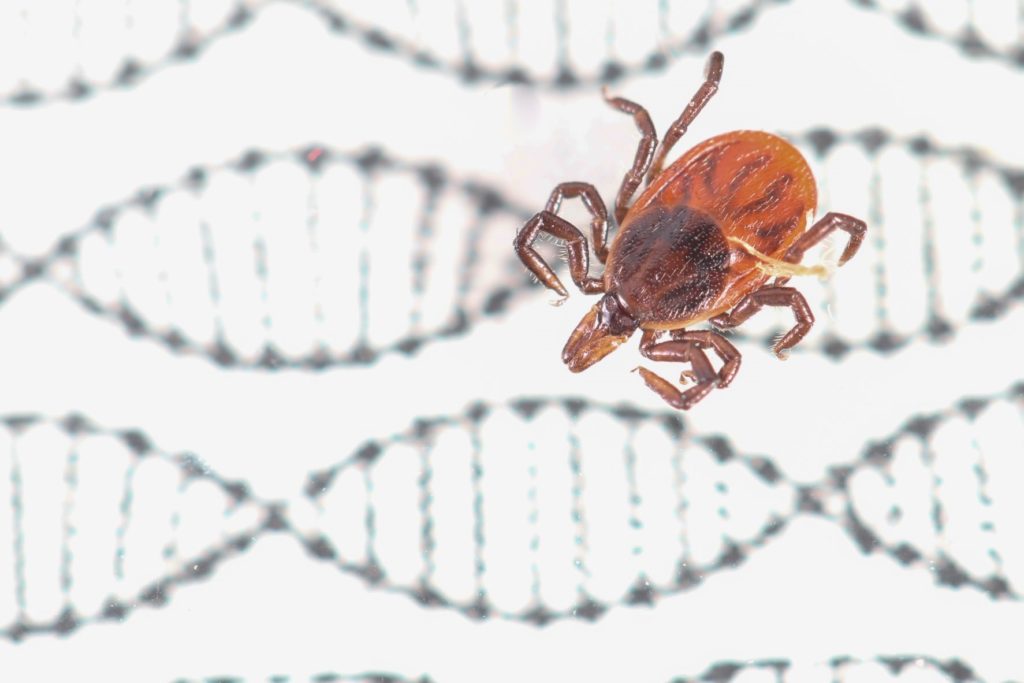
Collaborative research leads to noteworthy discovery that could decrease public health threat of tick-borne diseases, including Lyme disease
 University-led research has developed a new method that allows gene editing in ticks at the embryo stage, a protocol previously thought impossible for ticks. This ground-breaking discovery, published in iScience Journal, could decrease the ability of ticks to be a vector for disease causing pathogens.
University-led research has developed a new method that allows gene editing in ticks at the embryo stage, a protocol previously thought impossible for ticks. This ground-breaking discovery, published in iScience Journal, could decrease the ability of ticks to be a vector for disease causing pathogens.
Funded by the National Institutes of Health, the research collaboration was led by Monika Gulia-Nuss and Andrew Nuss, assistant professors at the University of Nevada, Reno, and involved Jason Rasgon at The Pennsylvania State University’s Center for Infectious Disease Dynamic and Robert Harrell at University of Maryland’s Institute for Bioscience and Biotechnology Research.
“Ticks are a public health nuisance. They transmit so many pathogens that can cause diseases in humans, companion animals, and wild animals,” said Gulia-Nuss, faculty member in UNR’s College of Agriculture, Biotechnology & Natural Resources. “If we understand the [tick] vectors better, we can probably find ways to control them as well, either through new acaricides, vaccines or drug development.”
While Lyme disease is the most common tick-borne disease, there are at least 20 different infections that are transmitted by ticks in the U.S. More than 300,000 new cases of Lyme disease are diagnosed each year, and the number of new cases and the areas where ticks are found are increasing.
Through collaboration with Rasgon and Harrell, Gulia-Nuss’ lab was able to develop the first gene-editing protocol for ticks. The researchers successfully carried out targeted gene disruption in ticks through two CRISPR gene-editing methods: embryo injection and Receptor-Mediated Ovary Transduction of Cargo (ReMOT Control), a less labor-intensive method of gene-editing first developed in insects by the Rasgon lab. Harrell, an expert in insect embryo injections, was an important collaborator for finding appropriate injection conditions for tick embryos.
With this new development, researchers can start editing genes, allowing them to ask questions that weren’t possible before. For example, when editing or removing certain genes, they can examine what happens to the tick and if this alteration interferes with the capacity of the tick to harbor a pathogen.
This public-impact research attracted the attention of the Congressionally established Tick-Borne Disease Working Group, which invited Gulia-Nuss to present her pioneering findings at their most recent meeting. “This is the first time ticks have been modified on the genetic level, so this research was really interesting for the [group],” she said.
Gulia-Nuss values the collaboration happening across labs, universities and research specialties. With the expertise and collaborative efforts of more researchers, more progress can be achieved in tick research, eventually reducing the tick-borne disease threat. “Together we stand stronger,” she said.
Contact: Jane Tors, Research Communications Director, UNR | 775-327-2359 | jtors@unr.edu
